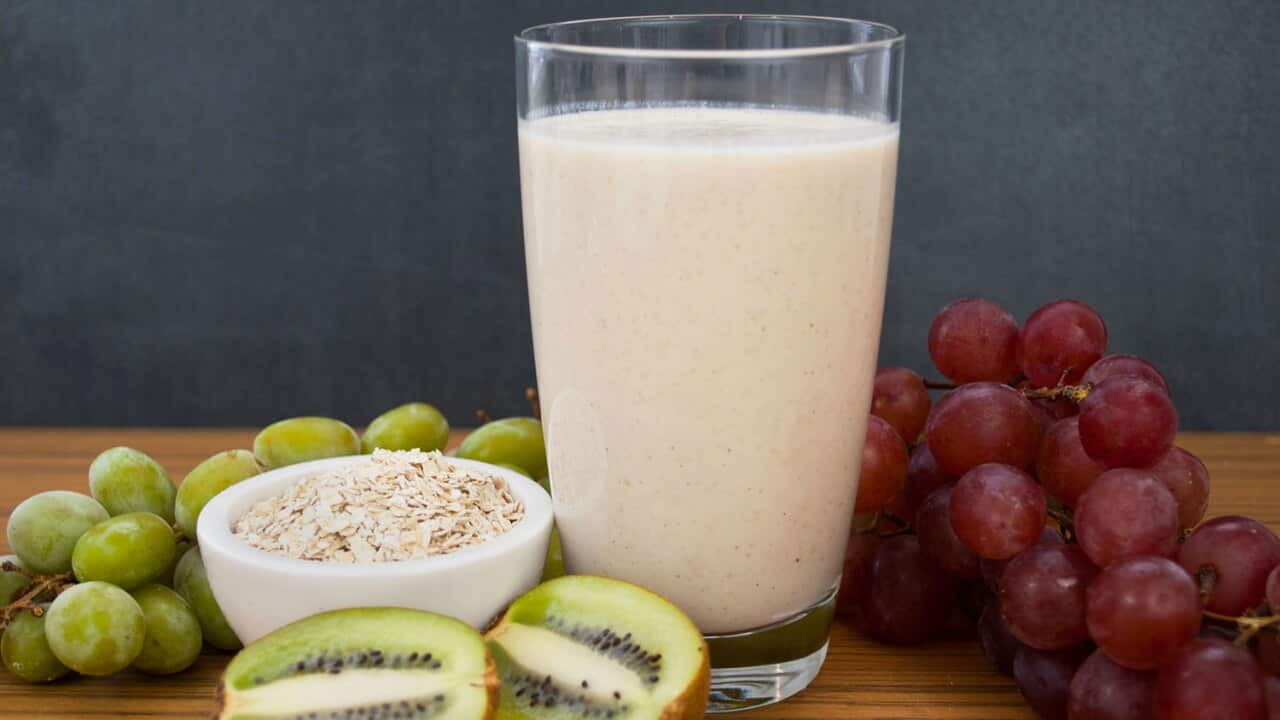When Frieda Caplan passed away in Los Angeles earlier this year, tributes to the produce pioneer flooded the internet. LA Times hailed her the "kiwi queen", myriad other US press labeling her the trailblazer who renamed the Chinese gooseberry to the kiwifruit. In Caplan’s keynote speech during the International Kiwifruit Organization Meeting in 2005, she explains that she in fact did not come up with the name kiwifruit. If this is true, where did this myth begin? From míhóutáo to Chinese gooseberry
From míhóutáo to Chinese gooseberry

Green gooseberries in a glass bowl. Source: Moment RF/Getty Images
The kiwifruit vine originates from southern China where it is called "míhóutáo" (猕猴桃). According to the New Zealand Journal of Crop and Horticultural Science, the míhóutáo found its way to New Zealand in 1904 via Wanganui Girls College Principal Isabel Fraser when she returned from visiting her missionary sister in modern-day Yichang-Hubei-China with the first seeds. A direct descendant of these seeds is what’s called the Hayward variety; the most commonly grown kiwifruit in the world today and what most Aussies know as the hairy brown "green kiwifruit". With many other nicknames, the ripe míhóutáo resembled the flavour of the European gooseberry, and with its origins in China, it became commonly known in New Zealand as the Chinese gooseberry from 1921.
The kiwifruit distributor
Caplan is a trailblazer. She started her produce wholesale company Frieda's Inc at the LA Market in 1962. She was a woman in a male-dominated industry, but she also focused on marketing exotic fruits and vegetables never seen before in the United States. As Caplan put it to , "I built the business selling things that were different".
Caplan sold New Zealand Chinese gooseberries in the 1960s. It was the then importer, Norman Sondag of Ziel & Co., who suggested she change the name to kiwifruit. As an authority in exotic produce and as the key distributor in the United States, Caplan played an instrumental role in the proliferation of kiwifruit. For decades, she was the kiwifruit champion, and publications wrote about her legend as the kiwifruit queen. As for the evolution of the kiwifruit’s name, it would seem logical to credit Norman Sondag, but this story isn’t over yet.
Why not the Chinese gooseberry?
Whilst New Zealanders loved eating and growing the Chinese gooseberry, its exports to the US in the 1950s stalled for various trade reasons. Sondag informed the New Zealanders that US quarantine officers at the time were concerned that classified "berries" grown from the ground might have contaminated soil with anthrax and thus not pass quarantine. At the time, Chinese gooseberries were classified as a berry even though they grow on a vine and don’t even touch the ground. According to the archives of New Zealand export company Turners & Growers, Sondag suggested to the Turner family that Chinese gooseberries was not a commercially suitable name, and that a Maori name should be chosen. How passionfruit got involved
How passionfruit got involved

Strong marketing campaigns contributed to kiwifruit's popularity around the world. Source: Camellia Aebischer
The Turner Family, pioneers of kiwifruit exports, quickly developed several commercial names for the Chinese gooseberry, one of them being the 'melonette'. This name never gained support, and eventually, according to Lisa Truttman from NZ History Federation, it was Jack Turner of the Turner Family in 1959 who suggested the name kiwifruit, combing the synonymous word passionfruit with the emblem of NZ the kiwi (bird).
According to the NZ Kiwifruit Journal 2021, "acceptance of the new name in export markets was greatly assisted by the efforts of the Kiwifruit Export Promotion Committee which over ten years from 1970 onwards and spent hundreds of millions of dollars in advertising.” By 1970 all kiwifruit exports out of New Zealand had adopted this name. And yes, the Chinese gooseberry does look a little like the kiwi bird. So factually it is Jack Turner who first coined the term kiwifruit, however, Caplan and Sondag both had vital roles in the creation and proliferation of its name.
As Frieda once championed many exotic and unknown fruits in her time, Thanh hopes to do the same for the next generation. Love the story? Follow the author here: Instagram TikTok







